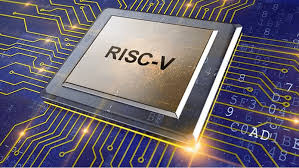Research White Paper
RISC-V as the Foundational Platform for IoT, Grid-Edge, and TinyML Solutions
Executive Summary
RISC-V is emerging as the backbone architecture for intelligent, energy-efficient IoT and grid-edge ecosystems. Its open-source design, modular ISA, hardware-level security, and AI-native capabilities align perfectly with the needs of distributed devices performing real-time, low-power analytics, especially in TinyML (Tiny Machine Learning) deployments.
This paper explores RISC-V’s strengths in supporting IoT, grid-edge, and TinyML solutions, showing how open hardware accelerates innovation across industrial automation, energy systems, and intelligent sensing — supported by applied research and implementation from IAS-Research.com and KeenComputer.com.
1. Open-Source Advantage and Cost Efficiency
RISC-V’s open-source ISA eliminates the licensing costs and vendor lock-in associated with proprietary architectures like ARM or x86. This reduces silicon and design costs, making it ideal for mass-deployed IoT and TinyML devices that often require minimal per-unit expense.
Furthermore, the global RISC-V ecosystem fosters collaboration between academia, startups, and semiconductor firms, leading to faster innovation cycles and more accessible edge intelligence technologies.
[1][2][5][8]
2. Modularity and Customization for Diverse Use Cases
The modular RISC-V ISA allows designers to tailor processors for specific operational constraints and performance profiles — whether optimizing for deep sleep modes in environmental sensors or enabling AI acceleration in micro-edge controllers.
- IoT devices can use minimal instruction sets with energy-saving extensions.
- Grid-edge controllers can integrate real-time processing and control.
- TinyML-enabled sensors can use specialized vector and DSP extensions for embedded neural networks.
This architectural flexibility enables efficient deployment across an entire IoT hierarchy, from micro-sensors to AI-enabled gateways.
[2][4][7][8]
3. Scalability and Ecosystem Unification
RISC-V scales seamlessly across devices — from tiny microcontrollers (MCUs) running TinyML models to multi-core processors powering grid-edge inference and control systems.
This scalability allows developers to reuse software toolchains, ML compilers (e.g., TensorFlow Lite Micro, Edge Impulse, TVM), and security frameworks across the device continuum.
Unified development reduces engineering complexity, accelerates prototyping, and ensures consistent data processing models across IoT, AI, and grid applications.
[1][4][10]
4. Security and Trust at the Hardware Level
Security-by-design is central to RISC-V’s value in distributed systems. The architecture supports custom hardware extensions for encryption, access control, and secure boot, ensuring trusted computation even in resource-constrained environments.
This is especially vital for:
- Smart grid-edge controllers preventing unauthorized access to infrastructure networks.
- IoT sensors transmitting data securely to cloud or edge servers.
- TinyML nodes performing local inference on sensitive data (e.g., health or energy consumption metrics).
By embedding cryptographic primitives directly into silicon, RISC-V mitigates vulnerabilities common in traditional IoT architectures.
[3][6][8]
5. RISC-V and TinyML: Intelligence at the Extreme Edge
TinyML represents a convergence of machine learning, ultra-low-power computing, and embedded systems, enabling AI inference directly on microcontrollers consuming only milliwatts of power.
RISC-V’s open and modular nature makes it the ideal hardware foundation for TinyML due to:
- Support for custom AI accelerators and vector extensions that enhance inference speed.
- Compatibility with TinyML frameworks like TensorFlow Lite Micro and Edge Impulse.
- Availability of open-source development kits such as SiFive HiFive boards and DFRobot RISC-V MCUs.
Use Cases include:
- Predictive maintenance of energy equipment using vibration analysis.
- Anomaly detection in smart grid substations.
- Environmental and occupancy sensing for smart buildings.
- Localized voice and vision AI for human–machine interfaces.
Through TinyML on RISC-V, organizations achieve on-device intelligence, reducing latency, cloud dependency, and bandwidth consumption — while maintaining privacy and energy efficiency.
[2][6][8][9]
6. Energy Efficiency and AI-Native Design
RISC-V processors are engineered for low-power operation with AI-ready extensions that accelerate vector math and matrix operations. These features are crucial for TinyML workloads and grid-edge decision-making systems.
The architecture’s lightweight instruction decoding and simplified pipeline enhance power efficiency without sacrificing performance, supporting continuous monitoring and adaptive control in renewable grids, logistics, and smart manufacturing.
[2][4][6][10]
7. Industry and Research Collaboration: IAS-Research.com and KeenComputer.com
IAS-Research.com and KeenComputer.com are contributing to RISC-V innovation through applied research, training, and integration services that combine IoT, edge AI, and TinyML.
Their projects include:
- RISC-V-based digital twin simulations for grid-edge performance optimization.
- TinyML deployment frameworks for predictive maintenance and smart agriculture.
- Integration with open-source IoT stacks (MQTT, Node-RED, and Modbus-TCP) on RISC-V platforms.
- Security auditing and firmware validation using hardware trust anchors.
IAS Research acts as a bridge between academia and industry, helping organizations design scalable, cost-efficient, and AI-ready embedded systems leveraging RISC-V for next-generation energy and industrial applications.
[8]
8. Conclusion
RISC-V represents the future of intelligent, distributed, and sustainable computing. Its open-source ecosystem, combined with the rise of TinyML and edge AI, enables low-cost, secure, and adaptive solutions for IoT and grid-edge environments.
By supporting local intelligence, hardware security, and energy optimization, RISC-V empowers global innovation in smart infrastructure, renewable energy, and industrial automation — a mission actively advanced by IAS-Research.com and KeenComputer.com.
References
[1] Meegle. RISC-V and IoT Devices.
[2] RISC-V International. IoT and Embedded Systems.
[3] All About Circuits. RISC-V’s Role in Securing IoT Devices.
[4] Meegle. RISC-V Edge Computing Solutions.
[5] EE Times. Reshaping the Landscape of IoT with RISC-V.
[6] SiFive. Securing the System: RISC-V and AI at the Edge.
[7] ISOLDE Project. Industrial IoT and RISC-V Open-Source Development.
[8] IAS Research. Applications of RISC-V in IoT, Grid-Edge, Digital Twin, and TinyML Ecosystems.
[9] DFRobot. Exploring RISC-V for Embedded Development.
[10] SiFive. Edge Computing Solutions.



